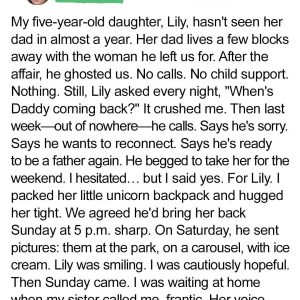One month after losing her husband Daniel, a grieving woman experienced something deeply unsettling. Her late husband’s phone, which she kept with her, suddenly lit up with a notification—there was a new charge on his credit card for a hotel room. The transaction had just occurred, leaving her confused and emotionally shaken.
Alarmed, she immediately set out for the hotel listed in the notification. While driving, a text appeared from an unknown number: “I’m already at the hotel, waiting for you.” Her anxiety turned to fear as the implications became more disturbing.
Moments later, the phone rang. A woman’s voice on the other end asked, “Where are you, love? I’ve been waiting for you for an hour!” Trembling, the widow demanded to know who was calling. The voice responded with confusion, “Isn’t this Jake’s phone?”
That was the breaking point—her husband’s name had been Daniel, not Jake. Nothing made sense. Her grief was now compounded by a terrifying mystery that challenged everything she thought she knew about the situation.
Determined to get answers, she dug deeper into the activity on the phone. What she discovered was horrifying: a 23-year-old man named Jake had hacked into Daniel’s phone. He had stolen Daniel’s identity and credit card information and was using them to make purchases and communicate with strangers.
Realizing the severity of the situation, she immediately contacted the authorities. With their assistance, she was able to put a stop to the ongoing fraud and begin reclaiming her husband’s digital identity.
The emotional toll was immense. It felt like losing Daniel all over again, but this time through a digital invasion that violated his memory and her mourning process.
Though deeply shaken, she ultimately found some peace in confronting the truth and stopping the impersonator. The incident served as a stark reminder of how vulnerable we are in the digital age—even after death—and underscored the importance of protecting our digital legacies.





